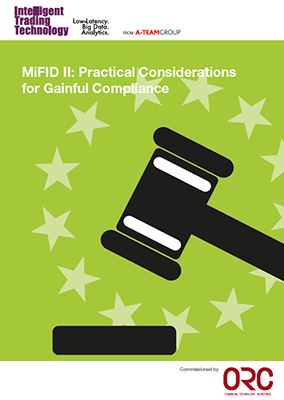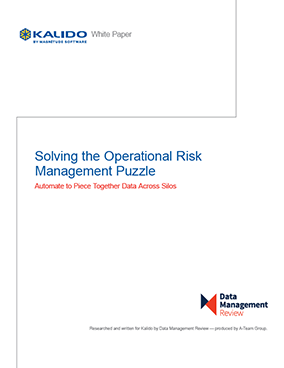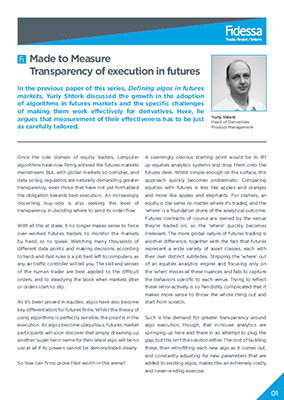RegTech Insight Regulations The latest content from across the platform
Navigating BCBS 239 and the New Stress-Testing Regime
Rigorous stress testing – and emerging regulations like Basel’s BCBS 239 – mean that the risk and finance functions can no longer act in isolation. Regulators are increasingly seeking a true, holistic view of risk. To deliver on the new requirement, banks need to reinvent their infrastructures and operating models, making sure all elements of…
Tracking bonds for Solvency II’s Matching Adjustment
How are you tracking bonds that are eligible for Solvency II’s Matching Adjustment (MA)? With the January 2016 deadline looming, insurance companies and the asset managers that service them need to be able to identify eligible assets in their portfolio. But there’s no single list, rather a set of criteria to be followed, resulting in…
MiFID II: Practical Considerations for Gainful Compliance
The EU’s Markets in Financial Instruments Directive (MiFID) II – which applies from January 2018 – aims to extend the market transparency introduced by its predecessor regulation to new areas of the marketplace. In many cases, MiFID II will be more granular, more prescriptive and more onerous than MiFID I, raising business and technology challenges…
Trade Europe Now
This paper has been written to provide a guide to effective electronic trading in Europe. It offers an overview of current state of play in the European market as well as dispelling myths surrounding MIFID II. It examines what elements are needed to effectively trade Europe, specifically looking at selecting the right physical point of…
Getting to Grips with the Challenge of Beneficial Ownership
Understanding beneficial ownership of an entity – a corporation or a fund – has emerged as a key element of many financial institutions’ compliance activities. A raft of relatively new regulations – ranging from the US Dodd-Frank Act through to Russian sanctions – require firms to understand who owns the entities they do business with,…
Solvency II How Insurers, Asset Managers and Asset Servicers are Meeting the Data Challenge
The EU’s Solvency II regulation is due to come into effect in January 2016. Aimed at ensuring the insurance industry fully understands the risks associated with its investments, the regulation places great emphasis on access to highly granular valuations and risk information. For most insurers, this is the first time they have been required to…
BCBS 239: An Urgent Call to Overhaul Risk Data Management
BCBS 239 is a wide ranging regulation including 14 principles spanning risk data aggregation and reporting, IT infrastructure, and data governance. Implementation can provide significant business benefits, including an enterprise-wide view of risk, but the task is not without difficulties as banks face data management challenges such as data silos, legacy systems and poor data…
Solving the Operational Risk Management Puzzle
Operational risk management has emerged as a major challenge as a slew of regulations affecting financial institutions across the board – from universal banks to insurance companies and their asset servicers – aims to boost transparency in order to mitigate systemic risk. The emerging regulations are emphasizing data governance and requiring firms to ‘show their…
Shifting Sands: Tracking the Evolution of Electronic Execution
Brokers are facing more pressure than ever before to ‘get it right’ with respect to trade execution in an increasingly complex market landscape. The EU’s MiFID II and other regulations around the globe are placing electronic execution in the spotlight. To meet the more onerous rules, brokers will need to bolster their execution infrastructures significantly….
Made to Measure: Transparency of Execution in Futures
Brokers are facing more pressure than ever before to ‘get it right’ with respect to trade execution in an increasingly complex market landscape. The EU’s MiFID II and other regulations around the globe are placing electronic execution in the spotlight. To meet the more onerous rules, brokers will need to bolster their execution infrastructures significantly….











